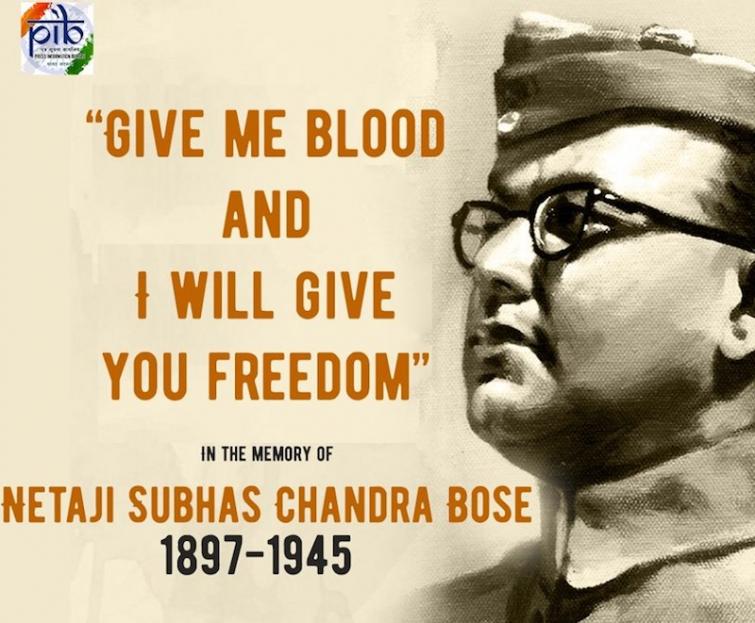KOLKATA: The Press Information Bureau’s tweet announcing August 18 as Netaji Subhas Chandra Boses death anniversary has been welcomed by one of his
grandnephews, author Ashis Ray.
Ray said that investigations by him between 1987 and 1995 had confirmed the charismatic freedom fighter’s death in a plane crush in Taipei on August 18 in 1945.
The Centre in reply to an RTI in 2017 had confirmed that Netaji had died on that day, he said. The PIB of the Government of India had made an announcement on August 18 acknowledging Subhas Chandra Bose’s death on that day. I welcome it, Ray told PTI from London over the telephone on Wednesday.
The PIB had on Sunday tweeted, “#PIB remembers the great freedom fighter Netaji Subhash Chandra Bose on his death anniversary. #Netaji #subhashchandrabose.”
It was withdrawn after protests by a section of Netaji’s family.
Ray, academician Sugata Bose and his mother Krishna Bose, both former parliamentarians, are among the family members who are of the opinion that Bose died in the air
crash.
I had taken my findings to the then Indian prime minister P V Narasimha Rao, who through his then external affairs minister Pranab Mukherjee had attempted to bring
Bose’s ashes from Tokyo (where they are allegedly preserved) to India, but without success, Ray said.
After more evidence came into my possession I launched a website www.bosefiles.info (now withdrawn) in 2015 with the facts backed by documentary proof. I then penned
Laid to Rest: The Controversy Over Subhas Chandra Boses Death, he said.
He also dismissed the demands of family members, including Chandra Kumar Bose, the West Bengal BJP vice-president, for conducting DNA tests on the remains of
Netaji. No DNA test has been carried out on Netaji’s ashes and this is unnecessary, because the evidence is overwhelming, he pointed out.
Chandra Bose and family members who share his views had urged Prime Minister Narendra Modi to form a special investiagting team to unravel the mystery surrounding the
nationalist leader’s disappearance over seven decades ago.
The SIT should conduct the DNA test on the ashes stored at the Renkoji temple in Tokyo, they demanded and urged Modi to speak to Japanese premier Shinzo Abe to ensure that
files held by that country’s government are declassified to unravel the mystery.
Ray asserted that there was no mystery about Netaji’s disappearance. “There is only a man made controversy. It has been negligence on the part of the Indian government and
ignorance or mischief on the part of others. Either way not to bring his remains to India has been great disrespect to Netaji”.
He said that the only person with legal and moral authority on conducting DNA tests is Netajis only child and their Professor Anita Bose Pfaff.
She (Anita) not only accepts the fact of her father’s death as a result of the air accident, but wants his remains to be brought to India for a final disposal, namely immersion
in the Ganga, he said.
Ray also criticised those trying to prove that Gumnamibaba, a sadhu of Uttar Pradesh, as Netaji. He said Gumnami Baba was a suspected murderer who disappeared after allegedly killing a fellow trustee of a Sanskrit school in Ayodhya before returning to Faizabad some
years later in the guise of a holy man. His real name was reportedly Krishna Dutt Upadhyay.
“It is the gravest insult to Bose and indeed a criminal defamation of him to suggest that a great hero of the freedom movement became Gumnami Baba… A DNA test was
ridiculously carried out on the teeth of this Gumnami Baba and the result was unsurprisingly wholly negative, Ray said.
On Chandra Boses insistence that the Centre should procure files on Netaji’s disappearance from Japan and seek Intelligence Bureau(IB) files in this connection, he said
There are no files relating to Subhas Chandra Bose’s death in Japan other than the interim investigation report (of 1945) and the final investigation report (of 1956) – copies of which
were handed over to me and are reproduced in my book.
There are no classified Intelligence Bureau files either on the subject of Bose’s death, he said adding “Everything has been declassified by the Narendra Modi government”.
There are several reports that say the freedom fighter had boarded a plane from Taihoku Airport in Taiwan on August 18, 1945, which crashed leading to his death. Many, however,
continue to believe that Netaji survived the plane crash and lived in hiding.
Reports had also suggested that his remains are preserved at the Renkoji temple in Tokyo.
Three inquiry commissions had been set up to unravel the mystery of Netaji’s death. Two of them – the Shah Nawaz Commission (1956) and Khosla Commission (1970) said that Bose died in an air crash. The third one – the Mukherjee Commission
(1999) had said he did not die in it.
On September 1, 2016, the Narendra Modi government declassified investigative reports of the Japanese government, which concluded that Subhas Chandra Bose had died in the air
crash. The Manmohan Singh government had accepted in 2006 that the ashes in Renkoji Temple were that of Netaji Subhash Chandra Bose.
Bose-Pfaff had last year appealed to the Governments of India and Japan to bring the remains back home. (AGENCIES)


